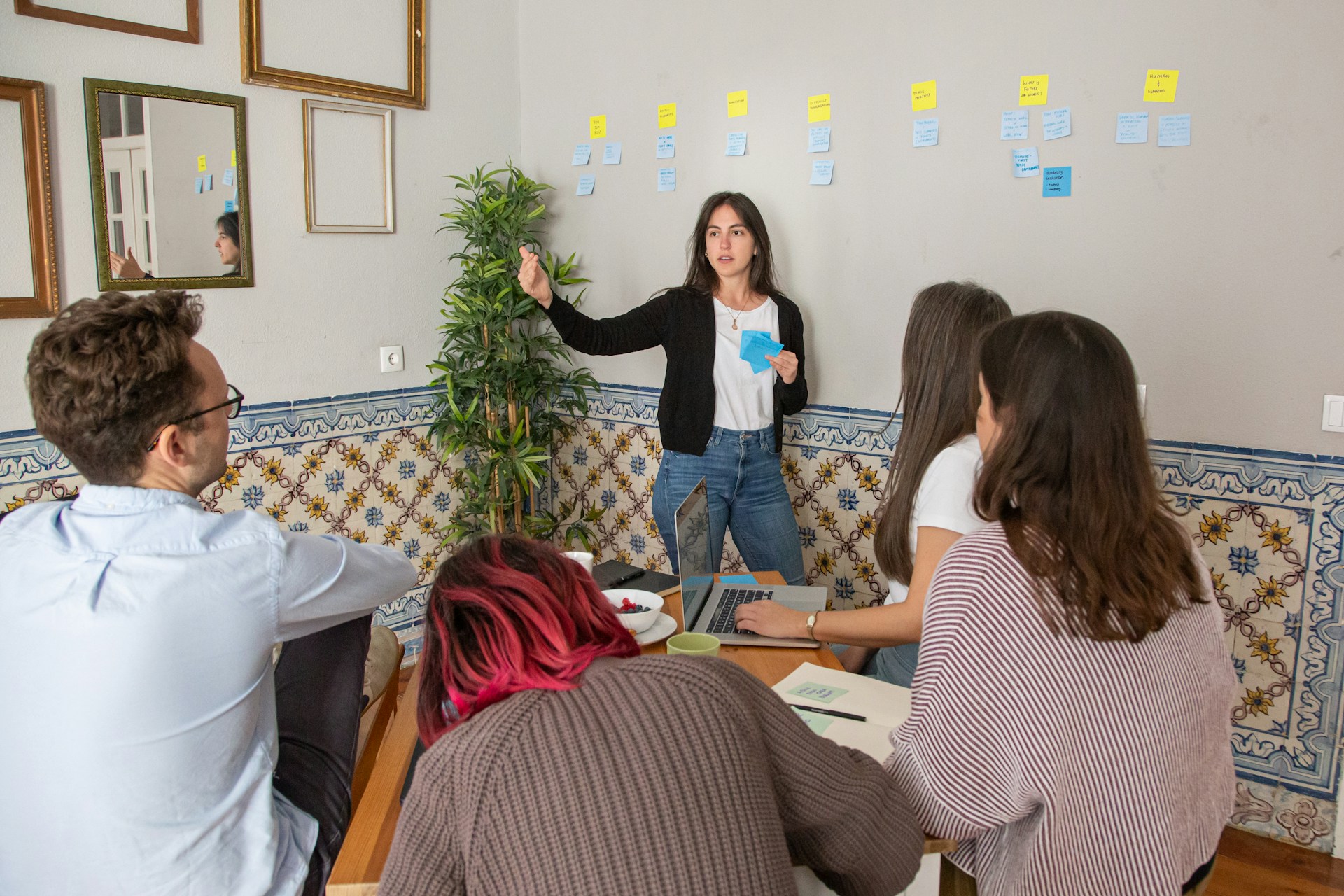Intent vs Impact: Aligning the Two With Improved Communication

Misunderstandings affect our personal lives and our workplace experiences. They are the result of assumptions that we make based on our own perceptions. Poor communication causes misinterpretations of events around us. These misunderstandings occur in the gap between intent and impact. But the gap can be bridged by open and honest communication. In this article, we explore the differences between intent and impact, how to resolve conflicts between intent and impact and how to strategically align the two.
Impact vs. intent: defined
Intent meaning: Simply put, intent is what we mean to do–the motivation or purpose of our actions or conversations.Impact meaning: Impact is what we achieve–the results of what we do or what we say, how our actions or words are perceived.The difference between the two is that what we mean to do or say may be contrary to what happens.
The difference: intent is personal, impact is not
The difference between intent and impact can best be explained in two of the four agreements, a philosophy of ancient Toltec wisdom, as explained by Don Miguel Ruiz. Never assume, which means that we can’t know another’s intent or their perceptions. It’s not personal, which means the impact we have is not about us.While intent is personal—it’s shaped by how we want to be seen–impact is not. Impact is formed by individual insights, experiences, bias and beliefs. It’s not one-size-fits-all.Because of our differences in nationality, ethnicity, age, gender, and even experience, everyone reacts differently to our actions and words. How we impact others is a reflection of their own perceptions, not a reflection of our own character. Although it’s not personal, impact can feel personal. We might feel judged or attacked when our well-meaning intentions go awry.
Understanding good intentions vs. harmful impact
To better understand the difference between positive intention and hurtful impact, let’s look at some examples:
- If you spill hot coffee on a someone while refilling their cup, your intention was to be helpful. You didn’t mean to cause injury.
- You praise a colleague’s outfit, and they take the compliment as a subtle dig to their normal workplace attire.
- You offer unsolicited advice, direction or assistance, intending to be supportive. However, your conversation or action may be perceived as judgmental or controlling.
- Let’s say you take an unconventional approach to troubleshoot a technical issue. You intend to be innovative. Maybe the solution is unsuccessful, and as a result, your employer loses time and money to make repairs.
Impact over intent: which is more important?
In a conflict, one might be tempted to weigh intent over impact. We tend to see things in terms of right and wrong.If we focus on impact, we put perception ahead of intention. And we expect everyone to know how their actions will be seen. Yet by assuming good intent, we make others unaccountable for negative impacts. Doing so minimizes feelings, polices reactions and possibly marginalizes minorities.There is a difference between blamelessness and accountability. One might be accountable for unintended reactions without being the subject of blame or punishment.
How not to react to unintended impact
In some of the above scenarios, the impact might have been avoided with more care or better planning. But often, we cannot foresee the impact we have on other people. It’s easy to be defensive when our good intentions have unintended negative results. But our noble intention doesn’t mend the situation and a defensive position can add insult to injury.Bridging–or widening–the gap between our good intention and bad impact is all in how we respond. We may not be able to control a person’s feelings, but that doesn’t make them invalid. We cannot correct an unintended result by minimizing feelings with words like:
- I didn’t mean to
- I’m sorry if
- I’m sorry but
- I’m sorry you
- You’re too sensitive
- Why is it always about
Effective conversations bridge the gap between intent and impact
When our impact is contrary to our intentions, how we move forward is key to mending that gap. Instead of getting defensive, we can use the opportunity to listen, learn, show empathy and do better. We can resolve a conflict caused by our actions with open and honest conversation. We can begin to mend the gap by:
- Attempting to understand the other person’s perception
- Acknowledging that the result of our action didn’t match the intent
- Taking responsibility for inadvertent consequence of our actions
- Offering a straightforward apology
Often, we’re not even aware of how our words or actions can be perceived as microaggressions (indirect or unintentional discrimination). But our lack of awareness doesn’t mean that the transgression is wrongly felt. We can bridge the gap between intent and impact by seeking to understand the perceptions and feelings of our coworkers and colleagues.
The science of intent
In addition to seeking to understand others’ perceptions, we can also align our intent to the impact that we have. Some scientists hypothesize that communicating our intention to ourselves can align our bodies to our intent. According to Stanford University professor emeritus William A. Teller, research shows that human intention can shape our physical reality. Lynne McTaggart takes this idea a step further in her book, The Intention Experiment. She proposes that research performed at Princeton, MIT, and Stanford demonstrate that intent shapes all aspects of our lives.
How coaching can improve communications and align intent to impact
Just as communicating intent to ourselves has a real impact on our bodies and our lives, effective communication of intent can shape the workplace. When company leaders clearly communicate intent, their teams can align to that intent and act on it. Understanding how our actions influence each other is a first step to getting the impact we desire.To fully realize our intent, we must take that further by clearly communicating and acting on our objectives. Doing so shapes workplace culture, customer experience, and brand perception. In addition, leaders reveal their intent to employees in how they resolve workplace conflict. Do they minimize impact, punish good intentions that have negative impact, or seek to understand, empathize and prevent conflict?If your company, leadership or workforce needs help aligning intent to impact, coaching can help. CoachHub is a recognized leader in professional coaching and mentoring for all levels of employees. Our services include digital coaching tools. Discover how our coaching programs can help you and your teams strategically align good intentions to positive impact.
FAQ
Yes, executive coaching plays a key role in retaining and engaging senior leaders by giving them space to reflect, grow, and lead with purpose. Through individualized support, executives strengthen communication, decision-making and resilience — all of which drive engagement and long-term satisfaction.
With CoachHub Executive™, organizations not only see improved leadership performance but also greater alignment, motivation and confidence among their top talent, resulting in higher retention and a stronger leadership pipeline.
CoachHub Executive™ goes beyond one-to-one sessions by integrating technology, measurable insights and continuous learning into every coaching journey. Each executive benefits from personalized matching with certified coaches and flexible session formats to reinforce development between sessions.
While traditional coaching often lacks scalability or measurable tracking, CoachHub ensures impact visibility through data-driven dashboards, 24/7 scheduling flexibility and a consistent, high-quality experience for leaders worldwide, that can be tailored to your organization's goals.
Yes, executive coaching is delivered across 90 countries in 40+ languages, with localized coach networks that meet the cultural and business needs of global organizations.




.svg)


.svg)





.png)



